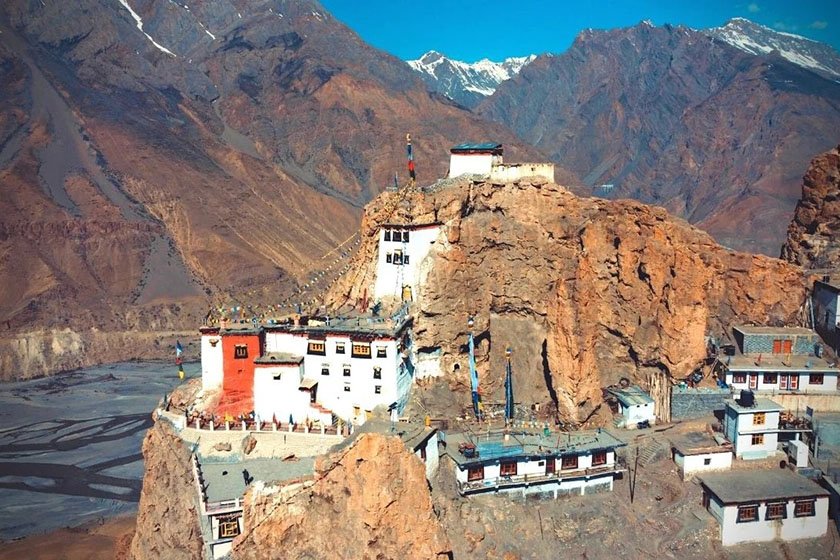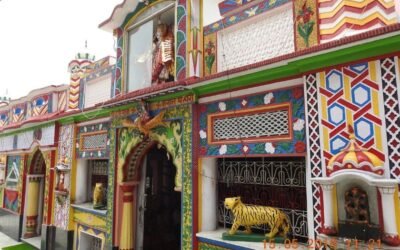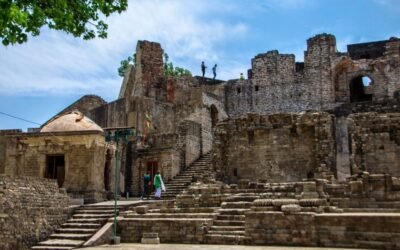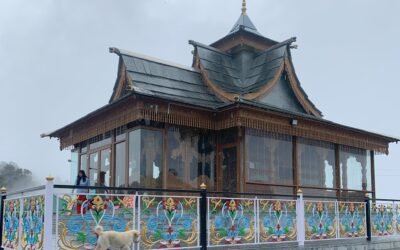Perched precariously on a 1,000-foot-high spur overlooking the confluence of the Spiti and Pin Rivers, the Dhankar Monastery (also spelled Dankhar or Dhangkar) is a breathtaking blend of spirituality, history, and Himalayan resilience. Once the capital of the Spiti kingdom, this 1,000-year-old gompa is a sentinel of Tibetan Buddhism and a marvel of cliffside architecture.
🌄 Location & Accessibility
- Location: Dhankar Village, between Tabo and Kaza, Lahaul & Spiti district, Himachal Pradesh
- Altitude: ~3,894 meters (12,774 feet) above sea level
- Nearest Towns: Tabo (23 km), Kaza (34 km)
- How to Reach:
- By Road:
- From Shimla via Kinnaur → Tabo → Dhankar
- From Manali via Rohtang & Kunzum Pass → Kaza → Dhankar
- By Rail: Nearest station – Shimla or Pathankot
- By Air: Bhuntar (Kullu) or Shimla airports
- Trek Option: From Sichling village (base point) to Dhankar (9 km uphill)
- By Road:
🛕 Historical & Spiritual Significance
The name Dhankar comes from “Dhang” (cliff) and “Khar” (fort), literally meaning “Fort on a Cliff.” The monastery was built in the 11th century and served as a fortified palace for the rulers of Spiti, known as the Nonos. It was also a center of Buddhist learning and diplomacy, strategically placed to monitor trade and invasions.
The monastery belongs to the Gelugpa (Yellow Hat) sect of Tibetan Buddhism and houses a life-size silver statue of Vajradhara, along with ancient thangkas, scriptures, and murals.
🕉️ Deity & Worship
Dhankar Monastery enshrines a rare four-faced statue of Vairochana, the transcendent Buddha who reigns over the center of the mandala of cosmic truth. Set within the ancient dukhang (assembly hall), the deity is venerated through Gelugpa prayers, incense, and recitation of scriptures. Worship rituals also honor local protective deities that guard the monastery and the valley below. Pilgrims often light butter lamps and offer white scarves (khatas) seeking spiritual wisdom and protection on their journeys.
🏛️ Architectural Highlights
- Built in mud, stone, and timber, the monastery clings to a narrow ridge like a natural extension of the mountain
- The main assembly hall (Dukhang) features a four-faced Vairochana Buddha and centuries-old murals
- A small museum displays ancient manuscripts, ritual objects, and historical photographs
- The old monastery, now endangered due to erosion and earthquakes, is listed among the 100 most endangered sites by the World Monuments Fund
- A new monastery, built in 2009 in nearby Shichilling village, now houses the monks and daily rituals
🏞️ Dhankar Lake – The Hidden Jewel
- A 2 km uphill trek from the monastery leads to the pristine Dhankar Lake (Dhankar Tso)
- Surrounded by snow-capped peaks and alpine meadows, the lake is ideal for meditation, photography, and solitude
- The trek takes about 1.5–2 hours round trip, and is best done in the morning
🎉 Festivals & Monastic Life
- Cham Dance Festival (July): Masked dances by monks to invoke peace and prosperity
- Daily Prayers: Visitors can attend morning and evening chants
- Meditation Retreats: Occasionally hosted for spiritual seekers
- Langars & Homestays: Local families offer food and lodging for pilgrims and trekkers
🏞️ Nearby Attractions
- Tabo Monastery: The “Ajanta of the Himalayas,” 23 km away
- Pin Valley National Park: A haven for snow leopards and Himalayan wildlife
- Kaza, Hikkim, Langza, and Komic: High-altitude villages rich in fossils and folklore
- Key Monastery: The largest gompa in Spiti, 50 km from Dhankar
🙏 Spiritual Experience
The Dhankar Monastery is not just a place—it’s a threshold between earth and sky, where faith clings to cliffs and silence speaks volumes. As you gaze down at the river confluence or up at the prayer flags fluttering in the wind, you’ll feel the timeless pull of a place where devotion defies gravity.




